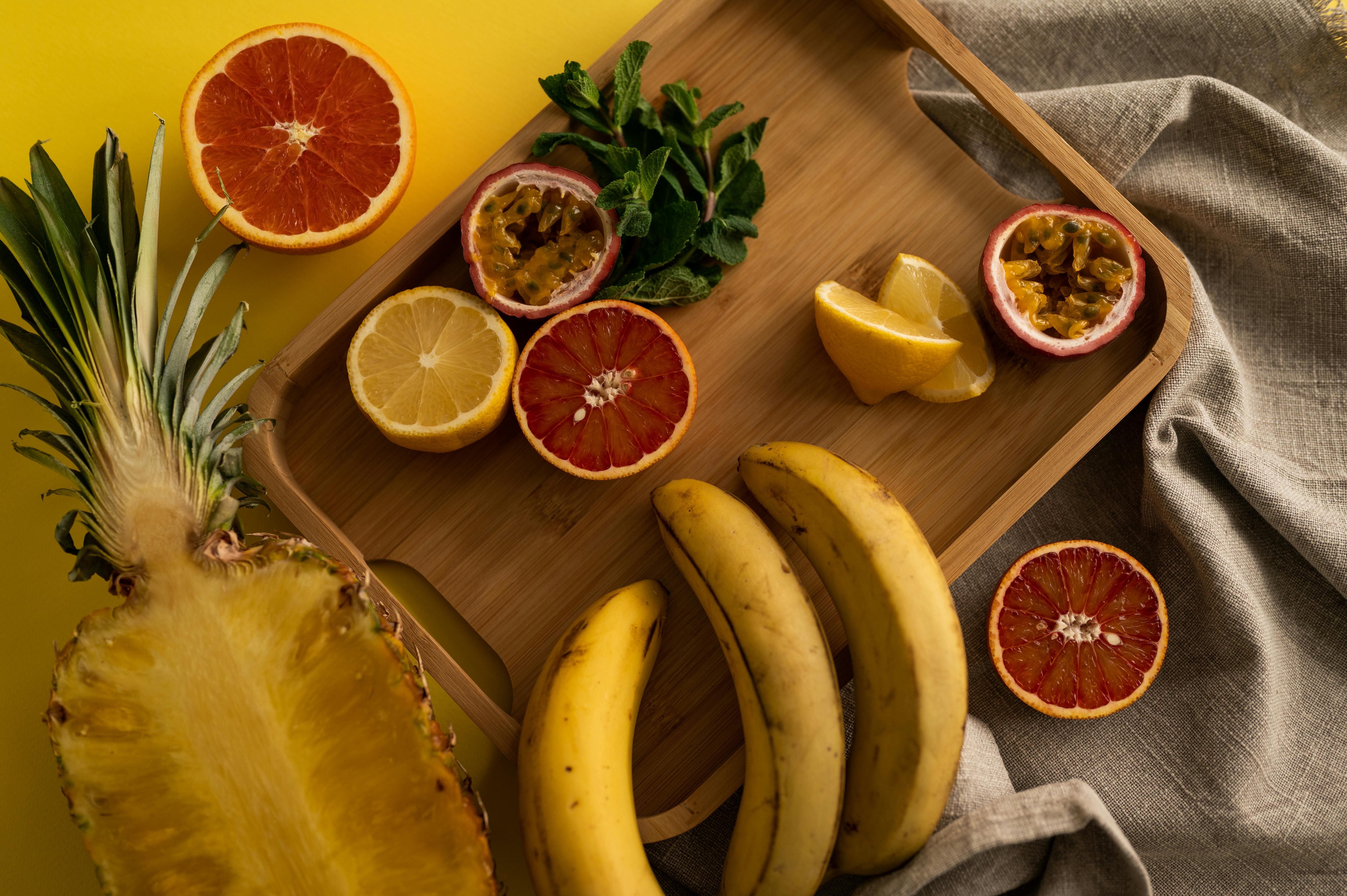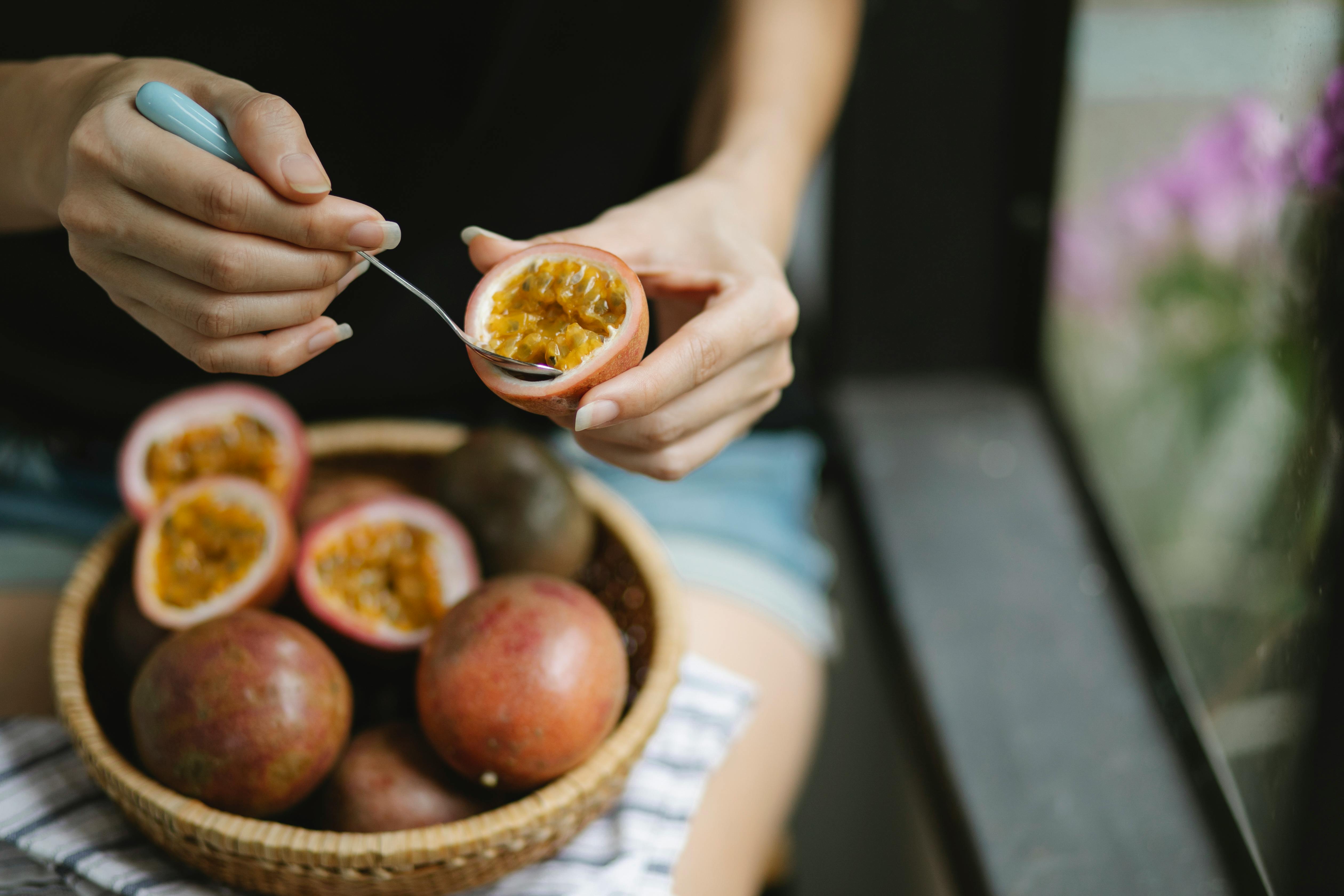Ripe passion fruit has a sweet, tart flavor that can be enjoyed in a variety of dishes and drinks. Knowing when the passion fruit is ripe can help you get the most out of your fruit. In this guide, we’ll discuss how to identify a ripe passion fruit and provide some tips on how to use it. With the right amount of knowledge, you can tell when passion fruit is ready to be eaten and make the most out of its unique flavor.To identify a ripe passion fruit, look for a fruit with a deep yellow or orange color and slightly soft skin. The fruit should have a sweet, fragrant aroma and feel heavy for its size. Gently press the skin with your fingers; a ripe passion fruit will be slightly soft to the touch. Avoid passion fruits that have wrinkles, blemishes, or are overly soft.
Signs of a Ripe Passion Fruit
It is important to identify the signs of ripe passion fruit since picking them at the right time is essential for optimal flavor and texture. Generally, ripe passion fruits will have a deep color and be slightly soft, like a tomato. Additionally, the skin should be slightly wrinkled and you may even see some cracks around the stem end. When you squeeze the fruit, it should give slightly to pressure. If the fruit is hard, it means that it is not yet ripe. You may also smell the fruit to determine if it is ripe; a ripe passion fruit will have an intense aroma that fills the air around it.
Another indicator of ripeness is whether or not the seeds inside are dark brown or black in color. If they are still green or yellow, then the passion fruit is not yet ready to be picked. Additionally, if there are any soft spots on the skin of the fruit, this means that it has gone past its peak ripeness and should not be eaten as it may be spoiled.
In order to pick a ripe passion fruit, look for fruits with deep coloring and slight softness when touched gently. Make sure there are no soft spots on its skin and check that its seeds are dark brown or black inside. If all these conditions are met, then your passion fruit will be perfectly ripe and ready for eating!
What Does a Ripe Passion Fruit Look Like?
A ripe passion fruit is round or oval in shape, and typically measures between two and four inches in diameter. The skin of the fruit is smooth and leathery, and when it’s ripe, it will be wrinkled with a purple or yellow color. Depending on the variety of passion fruit, the skin may also have patches or streaks of green or red. When you cut open the fruit, the flesh inside will be either yellow or purple in color. The interior also contains many edible seeds that are surrounded by a juicy pulp.
Passion fruits are generally considered to be ripe when they’re soft to the touch and have a sweet aroma. If you press your finger against the skin of the fruit, it should give slightly without feeling too hard or too soft. Generally speaking, if you’re unsure if a passion fruit is ripe, it’s best to err on the side of caution and select one that is more firm rather than too soft.
How to Tell if a Passion Fruit is Ready to Eat
Passion fruit is a tropical fruit that has a unique, sweet-tart flavor. It can be eaten fresh or used in recipes such as drinks, desserts, and sauces. Knowing when passion fruit is ripe and ready to eat can help ensure that you enjoy its best flavor. Here are some tips on how to tell if your passion fruit is ready to eat.
The first sign that the passion fruit is ripe is its color. Most types of passion fruit have a yellowish-orange hue when ripe, although some may be more purple or reddish in hue. To check for ripeness, gently press on the skin of the fruit with your fingers. If it yields slightly, then it’s likely ripe and ready to eat.
Another way to tell if the passion fruit is ripe is by smelling it. Ripe passion fruits should have a sweet aroma that will waft out when you hold it close to your nose. If there isn’t much of an aroma, then it’s likely not quite ready yet and needs a bit more time before you can enjoy it.
Finally, tap the passion fruit with your finger or knock two together gently and listen for a hollow sound. If you hear this sound, then the fruit should be ripe and ready to eat! Pass up any fruits that feel too firm or don’t make a hollow sound when tapped – these are not yet ripe enough for eating fresh.
Check the Skin of the Passion Fruit
When selecting a passion fruit, it is important to check the skin of the fruit. The skin should be firm and relatively smooth, with no soft spots or bruises. If there are any wrinkles in the skin, it can be an indication that the fruit is overripe and may not taste as sweet or juicy. It is also important to select a passion fruit that has a vibrant color, as this usually indicates that it is ripe and ready to eat. Additionally, when selecting a passion fruit, try to find one that feels heavy for its size as this could indicate that it is filled with juicy pulp.
It is also important to avoid any fruits with cuts or punctures in the skin as they can be prone to mold and decay. If you are selecting from a pre-packaged container, make sure to check for any signs of spoilage. Also make sure to sniff the fruit before purchasing it; if it has a pungent odor then it may have gone bad already. Lastly, try to select passion fruits that are free from blemishes or discoloration on the skin.

Smell the Skin of the Passion Fruit
Passion fruit has a unique scent that is often described as sweet and fragrant. The scent of passion fruit is often associated with tropical islands and exotic locations. The skin of a passion fruit is the source of its strong aroma, and it can be used to make delicious desserts, jams, and even drinks. When you smell the skin of a passion fruit, it will fill your nose with an intense aroma that can be quite alluring.
The taste of a passion fruit can vary depending on its stage of ripeness. Unripe passion fruits have a tart taste while ripe ones are much sweeter. The texture of a ripe passion fruit is slightly soft with an outer shell that yields easily when pressed. When you hold a ripe passion fruit in your hand, you will notice that its skin has a thin waxy coating which contains most of the aroma.
Passion fruits can be eaten raw or used in recipes to add flavor and sweetness to dishes. When adding them to recipes, it is best to remove the skin before cutting up the flesh in order to avoid any bitter or sour flavors from coming through. The pulp can also be blended into smoothies or used as a topping for desserts such as ice cream or cake.
Passion fruits are not only delicious but also very nutritious as they contain high amounts of vitamins A and C, potassium, fiber, calcium, iron and magnesium. They are also known for their antioxidant properties which can help reduce inflammation and boost immunity.
So if you’re looking for an exotic aroma with health benefits, then go ahead and smell the skin of a passion fruit! You won’t regret it!
Inspect the Color of the Passion Fruit
When it comes to selecting passion fruit, it is important to inspect the color. The skin of the passion fruit should be bright yellow or deep purple, depending on the variety. If the skin is too pale, it indicates that the fruit is not yet ripe and may not be suitable for eating. On the other hand, if the skin is overly dark or wrinkled, then this could indicate that the fruit has been over-ripened.
Passion fruits should also have a slight give when lightly squeezed. If they are too firm, then again this could indicate that they are not yet ripe. It is also important to check for any signs of bruising or soft spots on the skin as this can indicate decay and spoilage.
When selecting passion fruits, it’s best to choose those with bright and even coloring as these will be at their most flavorful and juicy. The aroma of a ripe passionfruit will also be sweet and pleasant – if there’s a hint of fermentation or sour smell then this could indicate that the fruit is past its prime and should be avoided.
Squeeze the Flesh of the Passion Fruit
Squeezing the flesh of passion fruit is an essential step for extracting its juice and pulp. It is also a great way to get the most out of your fruits. To do this, you will need a sharp knife, a bowl or container, and something to strain the juice with. Start by cutting the passion fruit in half and scooping out the flesh with a spoon. Place it into a bowl or container and then use a masher or fork to press down on the fruit and extract its juices. Once you have extracted all of the juice, strain it using either a cheesecloth or strainer to remove any seeds or chunks from it. You can then use this strained juice for making drinks, sauces, jams, and more!
For those who want to enjoy eating passion fruit straight up, squeezing it can also be an option. To do this, cut open your passion fruit like before but instead of pressing down on it with a masher or fork, use your hands to squeeze out its flesh into your mouth. This is an excellent way to keep all the juices intact while still getting all of its delicious flavors! You can also add sugar if you’d like for an extra sweet treat!

Conclusion
Passion fruit can be a delicious, sweet and tangy addition to many recipes. Knowing how to tell when a passion fruit is ripe can help you make the most of this exotic fruit. Ripe passion fruit will have a deeply yellow or purple-brown color and will feel slightly soft when gently squeezed. The skin should also appear wrinkled and have a sweet aroma emanating from it. Pass your finger over the surface of the fruit to check for any soft spots, which indicate that it has spoiled. With these tips, you will be able to identify if the passion fruit is ripe and ready for use in your favorite recipes!
Passion fruit is an excellent source of many vitamins and minerals, so take advantage of its health benefits by consuming it in its peak ripeness. Enjoy this juicy and flavorful treat while it’s still fresh!



